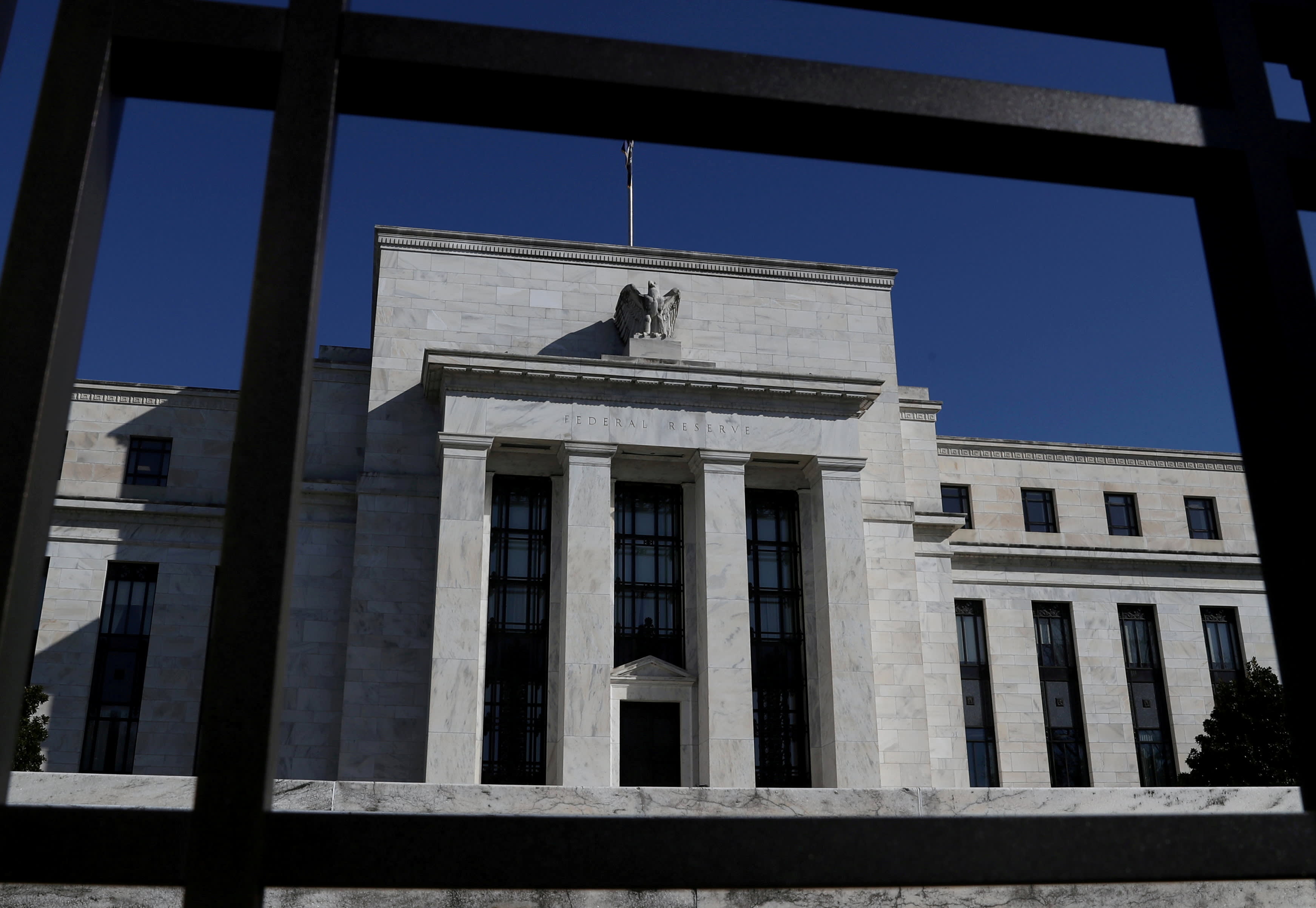While the Federal Reserve this week managed to clarify its near-term plans, there are still more than enough questions left for the long term to give investors anxiety.
Markets initially reacted favorably to the Fed’s post-meeting statement Wednesday, in which it said it will strike back against booming inflation by accelerating the reduction of its monthly bond purchases and probably raising interest rates three times in 2022.
But Thursday’s market action was less convincing, with rate-sensitive stocks falling sharply and government bond yields, which could have been expected to rise in the face of the Fed’s tighter monetary stance, instead falling.
One reason for the moves, especially in bonds, is that the market may not be quite convinced that the Fed can do what it outlined in its future projections.
“The bigger challenge for the Fed and for the markets is that they may not have the scope to raise rates as much as they say they do without inverting the yield curve and slowing down the economy more than they want,” said Kathy Jones, chief fixed income strategist at Charles Schwab. “What the market’s telling you is the Fed doesn’t have much scope to go beyond two or three hikes.”
On track to hike
The message from the “dot plot” of projections from the Federal Open Market Committee’s 18 members was that the Fed is prepared to go beyond just a couple increases.
Every member penciled in at least one rate hike in 2022, with two even going as far as indicating four increases. The majority of members saw the Fed approving three quarter-percentage-point hikes next year, followed by three more in 2023 and two in 2024.
But Jones thinks that outlook could be too aggressive considering all the challenges the economy faces, from the ongoing pandemic to the demographic and workforce limitations that have held inflation, and rates, in check for more than a decade.
“Pushing rates up that significantly could be pretty hard without causing much more tightening in financial conditions than they probably want to see,” she said.
Limits on raising rates could jeopardize the Fed’s credibility as an inflation fighter and stoke more fears of asset bubbles. Markets reacted strongly positive to the Wednesday statement, sending stocks on a big rally that reflected both relief that the FOMC’s statement was not excessively hawkish on monetary policy while the Fed’s scope to tighten financial conditions was limited.
With inflation running at a 39-year high, finding the right balance between stabilizing prices and supporting the economy will be challenging.
“In our view, the Fed has been falling behind the curve since earlier this year and remains well behind the curve today,” Mark Cabana, Bank of America’s head of U.S. rates strategy, said in a note.
“The Fed’s new policy is highly nonlinear, creating a dangerous end game,” Cabana added. “Once the Fed hits its goals, it should have a neutral policy stance, not a super-stimulative zero policy rate and massive balance sheet. In our view, the Fed has already essentially hit its goals.”
The tightening road ahead
Balance sheet reduction is a whole other issue that the Fed will have to face in the longer term.
Chairman Jerome Powell said at his post-meeting news conference that policymakers have just started discussions about ultimately reducing holdings. That process would commence after the taper is finished and likely not at least until the Fed has a few rate hikes under its belt.
Still, it’s another component and potential complication in the Fed trying to engineer a soft landing from monetary policy that has been accommodative at unprecedented levels. Last time, from 2017 to 2019, “quantitative tightening,” as it became known, did not end well, with markets revolting after Powell said the process was on “autopilot” at a time when the U.S. economy was weakening.
It’s all part of what Krishna Guha, head of global policy and central bank strategy at Evercore ISI, calls the “Powell conundrum” of having to tamp down inflation while supporting the economy through a challenging period.
“Relatively aggressive QT might be necessary if the Fed over time gets no traction on the longer end of the yield curve and wider financial conditions,” Guha said in a note. “This is the most obvious regard in which the ‘Powell conundrum’ needs to be considered carefully by investors and might contain the seeds of its own destruction, though this is relevant more on a through-2022 and beyond timeline, not for the next few weeks or even months.”
In the interim, the ride for markets could get stomach-churning, particularly after Fed officials return to the public dais and start giving policy speeches again. New York Fed President John Williams will be on CNBC’s “Squawk Box” on Friday at 8:30 a.m. ET.
“Going through the motions of fighting inflation, which is what we’re talking about, could cause quite a lot of short-term volatility,” said Christopher Whalen, chairman of Whalen Global Advisors.
However, Whalen expects the Fed would acquiesce to markets if policy became restrictive.
“The unspoken truth of America is we need inflation in this society to keep the political peace,” he said. “I’m not looking for a great deal of inflation-fighting from this guy [Powell] because if the market swoons he’s going to fold real fast.”
